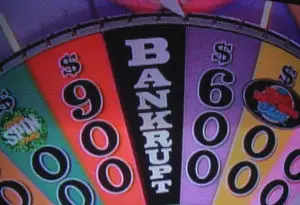Trading coach Van Tharp has a trading game he lets his students play. In a class of 20 to 30 people he will pull different color marbles out of a bag to determine whether the classes trades are winners or losers and by what multiple. There are overall more winning marbles than losers marbles in the bag making this hypothetical trading system a robust system. In the long term the traders playing the game should make money. While the class all receives the same win and loss results during the game some players blow up their account to zero very quickly and others end up with great returns during the game. What is going on? What makes the difference? Each individual traders bet size and the amount of capital at risk determines whether they win or lose even though they are all getting the same trading results in wins and losses. The traders that bet too much and lose at the beginning of the game blow up quickly, the ones that bet big and win in the beginning start in the lead but blow up their accounts later. The best risk managers in the game win primarily by simply surviving their first consecutive string of losses while others do not. The winners also are able to grow their bet size during winning streaks as their capital grows. They bet more as they win and less as they lose by defining a percent of their total capital as a risk multiple that they can expose to losses.
Surviving the Trading Game
